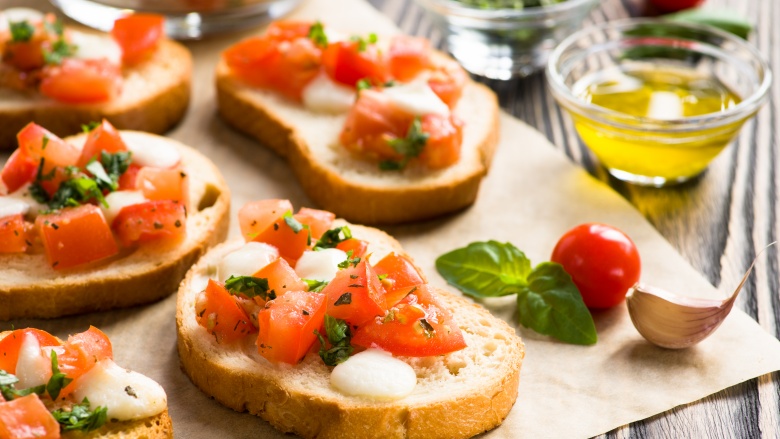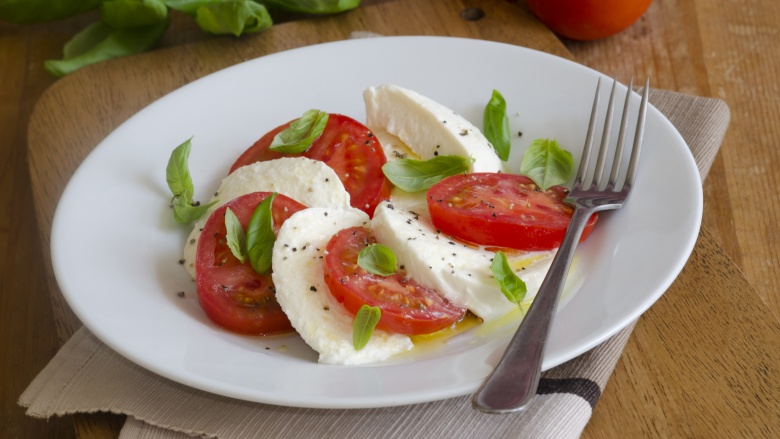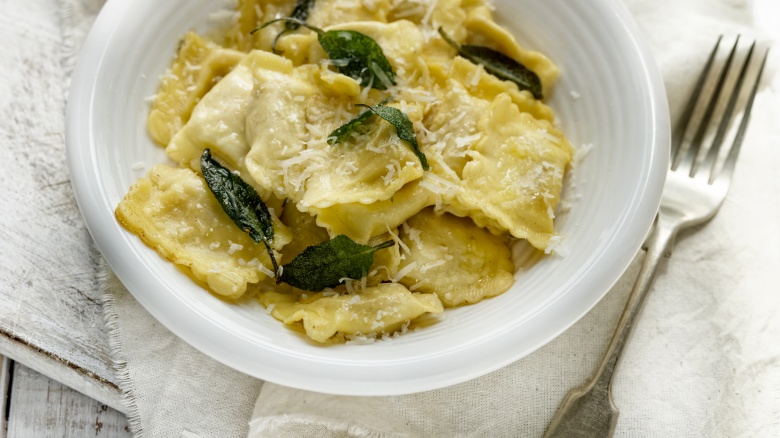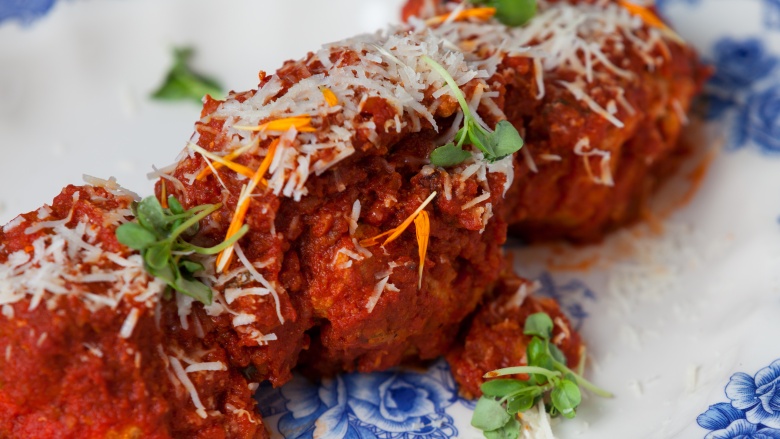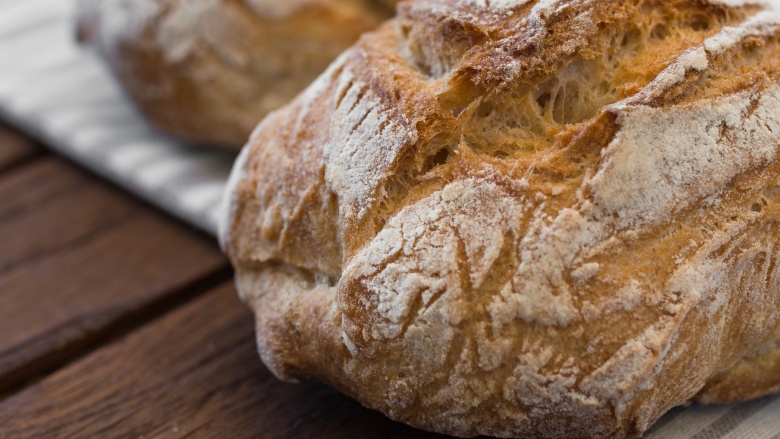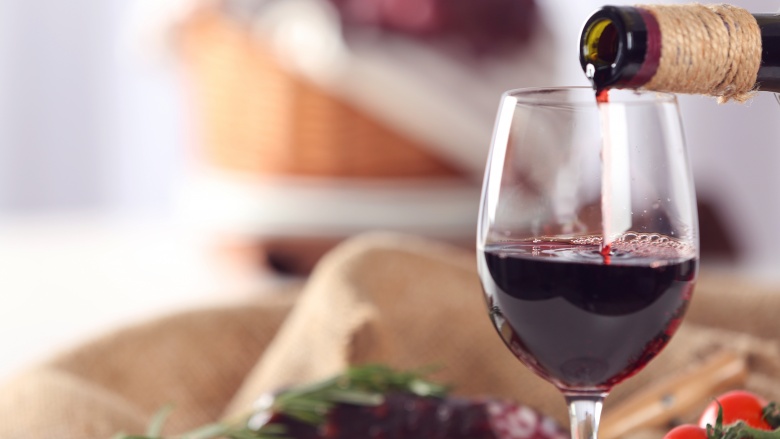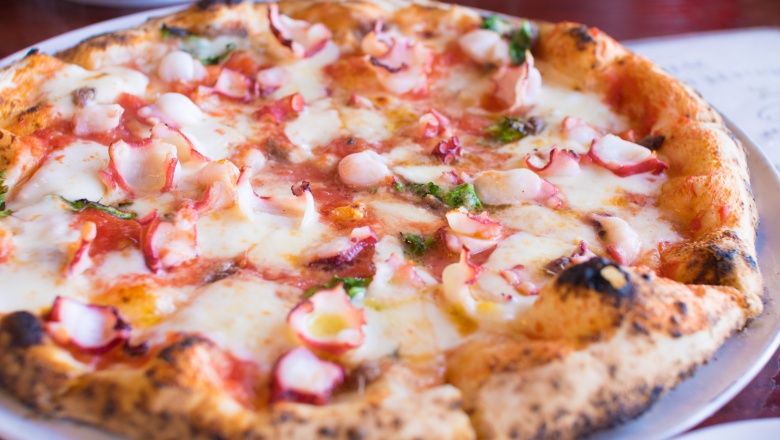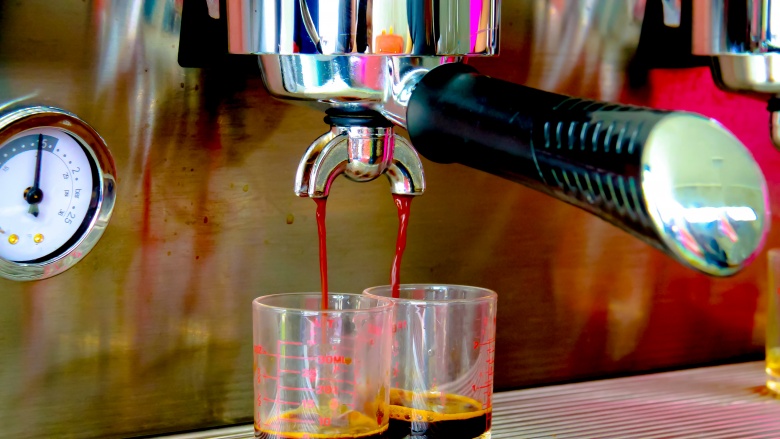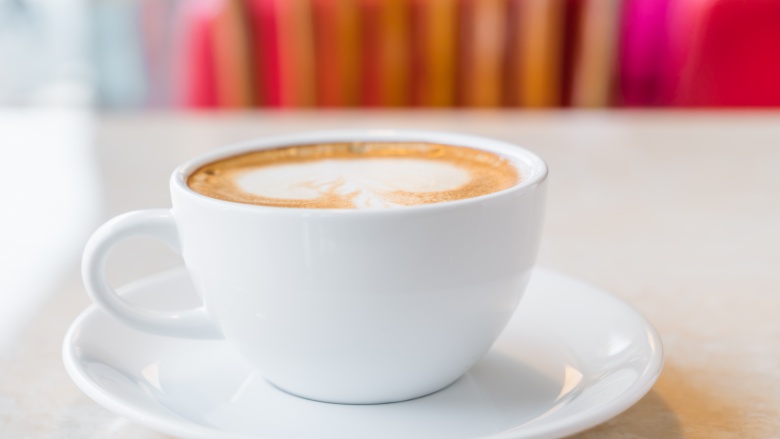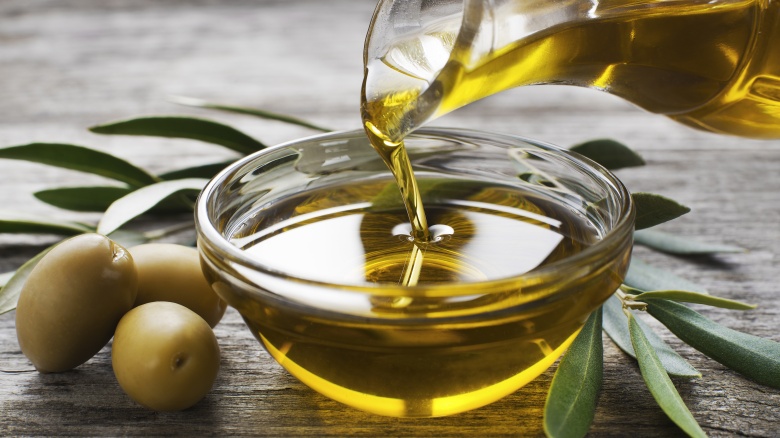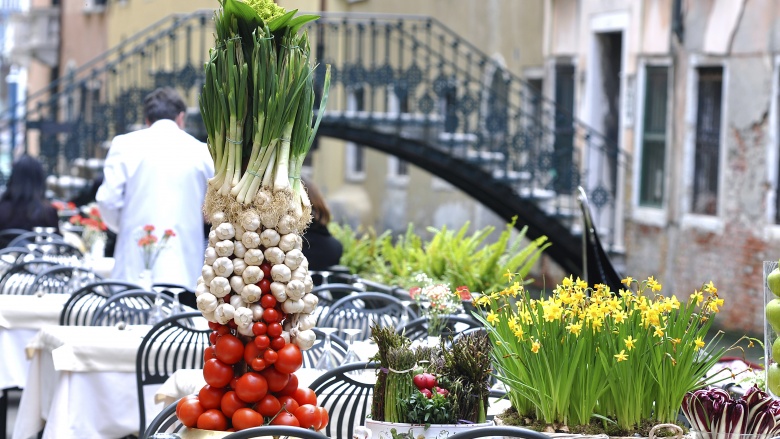The Truth About Italian Food
"Il cibo é l'essenza della vita." Food is the essence of life. For Italians, this has been true for over 2,000 years. The people of Italy live to eat, and it's visible in their appreciation of well-made dishes and their interest in each ingredient and where it was grown. This approach to food is central to "l'arte della cucina," the art of italian cooking as it exists in Italy. No matter how much we toot our horns in the U.S. about farm-to-table eating, these paisanos invented it, and when they couldn't find things fresh or authentic, they bought the closest thing they could—whether it was fresh, frozen, or canned—and made substitutions. It's why Italian-American food is nothing like food in Italy.
But there is one thing both Italian cuisines have in common: a fierce dedication to and appreciation for the family. Italians on both sides of the Atlantic love sharing a delicious meal with friends and family, and when it's suppertime it's always the more the merrier.
Many first-time visitors from the U.S. to Italy are surprised by the striking differences in table manners, menus, and traditions, and the same is true of Italians when they visit the U.S. Let's discover some of the truth about Italian food.
Italians dine in courses
Dining in Italy is more than just sustenance. It's a way of life that is meant to be savored, enjoyed, and never rushed. Even if they have a busy work day, Italians will have a three-course lunch and then head back to work. You won't see them doing a wild, gustatory, 30-minute dash at their desk. Dining in courses (small portions are key) is believed to be more civilized and healthier for digestion, and whether it's pranzo (lunch) or cena (dinner), there is a progression to the dishes served that is almost universal from region to region.
In Italy, lunch, not dinner, is the main meal. Dinner is usually light and will include simple dishes like a frittata with soup or salad. The big meal, served at midday, is on Sunday, when generations of the extended family gather together at the table and enjoy a full meal with multiple courses that are enjoyed over a long afternoon.
Here's a breakdown of the typical courses served for lunch and dinner. Not every course will be eaten every day, and even more food will be included for special occasions, but you can count on at least two or three being eaten regularly.
To start the meal, there is an antipasto, often a plate of local cheeses and salumi or a more elaborate display of pickled vegetables, crostini, or olives. Primo piatto is the first course, and depending on the region it will be risotto, polenta, or pasta (either fresh or dried), followed by secondo piatto, the second course. Secondo is what we would consider the main course since it's meat or fish accompanied by a contorno (side dish) that's often a verdura (vegetable) or a composed salad made with vegetables and other ingredients. Green salads come at the end of the meal, or can be served with contorni and the primo secondi. The salads are refreshingly simple, and cheese comes before dolci, the dessert course.
How Italians eat: appetizers and pasta
Appetizers are meant to be teasers, not full-size servings, so don't expect to share one between two people. What whets your appetite varies depending on the local meats, cheeses, seafood, and produce. An appetizer can be as simple as a plate of marinated olives with bread and cheese, or an assortment of olives, pickled vegetables, cheese, salami, bruschetta, and canapes.
Pasta is often the small second course. It could be a classic Piedmont dish like agnolotti ("priests' hats"). All is right with the world when this is served. These little rectangular pillows of dough have lovely crimped edges and are filled with herbs and braised pork, beef, or veal, then topped with fresh sage fried in butter and sprinkled with Parmesan cheese. No two recipes are alike, and every town has its own variation.
Pasta in Italy is different
If you're an American in Italy and you think the pizza is different, wait until you order pasta. Pastas come in small portions and the waiters are confused when you order "classics." They want to know who Alfredo is and why you are ordering fettucini for him. Then you are confused because your fettucini arrives tossed with butter and Parmesan cheese and it's called "al burro." In fact, most of the pastas don't seem to have a lot of sauce or meat on them. Why? Because Italian cooks minimize the ingredients so you can taste and savor each item and appreciate the combination of ingredients in the dish.
So, what else is different about the food in Italy? First, bolognese sauce, or ragu alla bolognese, is a rich meat sauce from Bologna. This flavorful meat sauce is traditionally served over tagliatelle pasta or with baked lasagna and is never served over spaghetti. Ever. Spaghetti, which comes from southern Italy, is never served with polpetti (meatballs). In fact, polpetti aren't served with pasta at all, and they are never the size of a softball.
Don't expect to see shrimp scampi drowning in garlicky butter sauce over spaghetti. If you've been turned off by garlic clouds before, you'll appreciate the delicate touch of garlic that sometimes accompanies dishes. The list is longer, but you get the point: big helpings of meat don't get splashed over pasta.
The second course and more
For the meat course, portions are small and served with contorni. In northern regions, this could be roasted pork served with sauteed local porcini mushrooms. Famous for their flavor, these porcini mushrooms are intensely flavored and aromatic, and they perfectly match the local pork. The secondo is where you will find classic polpetti, or meatballs, served with a light sauce. (And again, never over pasta.)
Salads don't begin the meal; they signal the end and are meant to cleanse the palate. Things are kept light and simple with a mix of lettuce, sliced tomatoes if they're in season, and a toss of a simple vinaigrette. That's all. The salad isn't piled with cheese, cold cuts, or thick dressings—just what's fresh from the garden. If you want a bit of cheese, you can have a cheese course in place of or before dessert, and you can choose one of over 400 local specialty cheeses.
Depending on the season, dolci can be a bowl of just-picked fruit, an irresistible dessert like bomboloni, gelati, cakes, tarts, or pastries. You might finish with a coffee, and depending on the mood or company, a final crescendo: the digestivo. The popularity of cocktails, spirits, and liqueurs has made more of these drinks common here in America, so raise your glass and sip a tart Limoncello. It will settle your meal if you (somehow) had just a bit too much to eat.
Bread isn't a course
Bread can tell you a lot about how Italians eat: from one region to the next, bread is as varied as the landscape. It's served with salami or cheese for an antipasto and as a crostini or bruschetta topped with fresh summer tomatoes. But bread isn't eaten throughout the meal, and it certainly isn't distractedly nibbled on between courses. It's generally served with the main course and salad, mostly because Italians love to "fare la scarpetta" ("do the little shoe"): clean up the sauce from the plate with a piece of bread.
But be forewarned, this is not considered appropriate in public or as a guest in someone's home. It's best to reserve honoring this Italian tradition at home or among friends you know a little better.
This tradition is centuries old. In places like Tuscany and Umbria, it's as much a way to clean your plate as it is a political statement revealing your social status. In both regions, they make a style of bread that doesn't contain salt. This kind of bread is a vestige of lean times when salt was hard to come by. It was so heavily taxed that people couldn't afford to use it in their bread or refused to in defiance of the exorbitant taxes. Just don't make a meal of the bread: it's a supporting cast member, not the star. Scarpetta improves the taste of the bread.
Wine is part of the meal
Two bottles are a familiar sight at every table. They are the pillars of the drink selections in Italy: a bottle of wine and a bottle of naturale (still) or frizzante (sparkling) water, and nothing else. Wine has been made in Italy since Homer wrote. From one region and village to the next, you can find exceptional wine in every style produced using 350 different grapes, many of which are obscure even in Italy. Italians are understandably proud of this incredible vinous history and never dine without wine. It is essential to the meal because wine is food to Italians.
Anything that can distract from the meal or prevent diners from really tasting what they are eating, is ignored. Italians don't unnecessarily burden their palates with heavy sauces and sweet drinks during a meal. Coffee, soda, and cocktails aren't served because they keep you from tasting what you are eating. Once you taste everything, you won't miss that fizzy drink at all. The wine complements the food, and water lets you properly taste what you are eating. Now, just because they don't mix things up during the meal doesn't mean an aperitivo (pre-dinner drink), and digestivo (post-dinner drink) are off the table. After all, Italians have an extensive repertoire of liqueurs and tonics that you have to try.
What's up with Italian pizza?
Make a visit to Italy and right away you notice a lot of the food, from lattes to pizza, seems to be from an alternate dimension. Italy was a collection of regions as distinct from each other as if they were independent nations. Lack of roadways and transportation kept each region insulated from other regions and reinforced the fierce loyalty to regions, cities, and small villages. Culturally, each region was an island with its own traditions. It wasn't until modernity and the end of World War II that knowledge of the regional cuisines spread. Eventually, foodstuffs from one region to the next migrated and shared their local foods with their fellow Italians.
Although pizza comes from Naples in Campania, it has migrated north and south and is now often served with toppings that reflect the local foods available. Americans can be confused by the staunch loyalty that still divides one region from the other. You know what pizza is, and you recognize pizza Margherita, but that's it. There are pizzas topped with potatoes, clams, corn, broccoli, sliced pears, and Gorgonzola blue cheese, but when you order pepperoni pizza, your pizza is topped with peppers ("peperone" in Italian), and people around you eat their pizzas with knives and forks.
Bars are different in Italy
In America, bars are where you go for happy hour, but in Italy, a bar is a far cry from the dark joints where we hang out. This kind of bar is the heart of the neighborhood and it's where you can grab a quick caffé early in the morning, stop in for a panini and salad, enjoy a gelato, and go for an aperitivo in the evening before dinner.
Guests are expected to pay for their food first, and in some of the small bars, you may have to pay extra to sit down. Some bars sell light meals, but most only sell things you can buy on the go or take home like pasticceria (cakes) and many sell caffé all day long. The old-fashioned ones, called tabaccheria, sell cigarettes, lottery tickets, and bus tickets, and let you pay your bills, charge your phone, and more.
Coffee is not just a cuppa
Starbucks regulars will find that coffee in Italy is much more than a dash in and out for a paper cup of piping hot coffee with a paragraph-long name. Coffee, and its preparation and service, is like a complicated ballet with many dancers, acts, scenes, traditions, and pas de deux. You have to step lively and know your part or you will stumble, embarrass yourself, and maybe even offend someone if you get things wrong.
Stop ordering cappuccino anytime except the morning. It's a breakfast drink, it isn't served after noon, and it annoys the heck out of the Italians when you order it at lunch or dinner. Espresso is never called that: it's just un caffé. The first coffee in the morning is called a moka and doesn't contain chocolate. And don't expect to find lattes and complicated coffee drinks everywhere.
Instead, visit the beautiful traditional coffee houses that serve coffee like a sacred liquid in hallowed temples to caffeine. These architectural gems are antique relics complete with exquisite paneled salons, marble counters and floors, and coffee drinks served in fine china cups that reflect the luxurious quality of the revered drink. Career baristas create specialty coffees brewed to order that come in distinct cups based on the recipe. There is a language and litany of customs you need to learn before you order, but once you learn the code you'll be on your way to enjoying the true Italian way of life and eating.
Gelato is definitely not ice cream
It's funny, "gelato" means "ice cream" in Italian, but that's the only thing it has in common with the American version. Just take a look at the green, blue, and magenta pop art colors of the ice creams that line freezer shelves in the grocery store and the differences are glaring. American-style ice cream is richer, denser, and fatter (10 percent or more) thanks to more cream than milk in the recipe. It is also heavier because it's churned full of air at a high speed and the heavy fat content causes it to freeze as hard as rock. To maintain this thick texture and prevent hardening, the ice cream is often loaded with emulsifiers, stabilizers, and preservatives, which is obvious in the taste.
In contrast, gelato is the couture of frozen treats and has a silky, smooth viscosity that melts in the mouth because it has more milk than cream. This makes the gelato naturally more stable at higher temperatures and thus releases incredible flavors as it melts on the tongue. As you can see, gelato is not just a fun treat, and to protect its status as an important food, there is even an official stamp of approval designed to guarantee the gelato is made with only the best ingredients. When buying gelato at a gelateria, look for placards that say "produzione propria" and "artigianale." This lets you know the gelato was prepared by hand on the property using only natural ingredients and time-honored recipes.
Oil and butter
Anytime you visit another country, it's helpful to have a culinary shorthand that can help you understand the cuisine and cooking traditions. In Italy, a quick way to do that is by learning which regions use olive oil for cooking and which ones use butter. Generally, you will find butter is used more in the northern regions and olive oil is more common in the southern ones, but some places use both together.
You will notice certain things are missing from the table and the service in Italian restaurants, starting with the basket of bread with butter that's almost obligatory in Italian restaurants in the U.S. Bread is not a starter, nor is it served with drizzles of balsamic vinegar or sprinkles of coarse black pepper or whatever silly thing restaurants are trying to convince us is authentically Italian. In Italy, butter and olive oil are used to cook with. In some regions, a small amount of olive oil is poured over the top of freshly cooked pasta to keep things moist and enhance the flavor of the dish. Don't look for little ramekins of butter or pitchers of olive oil on the table.
Snacks with style
Fast food hasn't yet put down deep roots in Italy because dining well, slowly savoring small portions, and enjoying a meal and the company are simpatico with the Italian appreciation for la dolce vita, the good life. When one dines well, there isn't a need for junk food, snacking, or food forays between meals. Steal some time to relax and maybe grab a merenda ("small snack") as a pick-me-up until dinner later in the evening. That's just life, and Italians make the most of the custom.
A classic Venetian tradition that's easy to fall in love with is called "andar a cicheti," and it's as old and romantic as the Renaissance era that spawned it. It's part of the tradition called "ombre" ("shadow") and is a nod to the centuries-old practice of street vendors selling tiny ("cicheti") snacks beneath the shadows of the buildings during the afternoon lull when appetites start to awaken and people crave a bit of food and sip of wine. Before then, the sun and heat are just too intense to even think of moving or eating. Either sold on the street or in the dark, cool recesses of hideaways called "bacari," these little spots are the best place to laze away while sipping from small glasses of wine and reviving yourself with elegant snacks before dinner.

